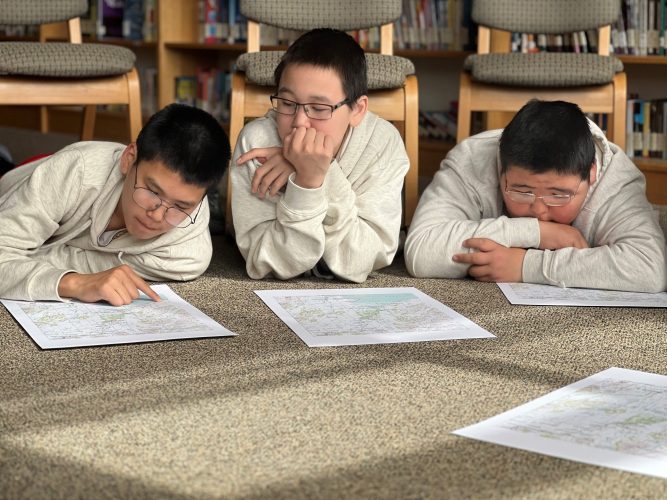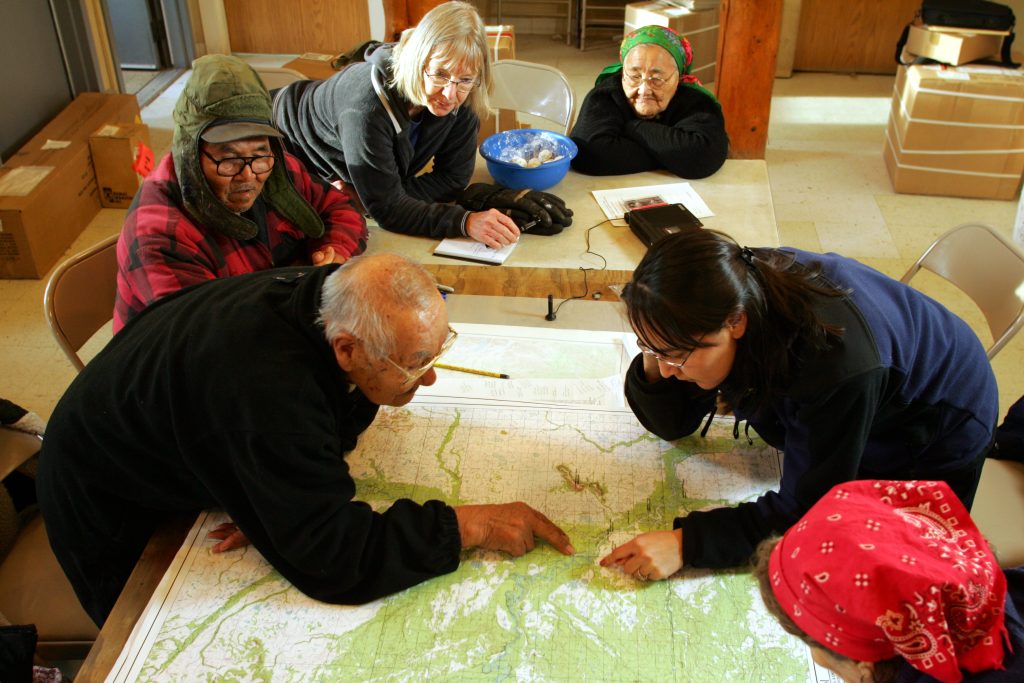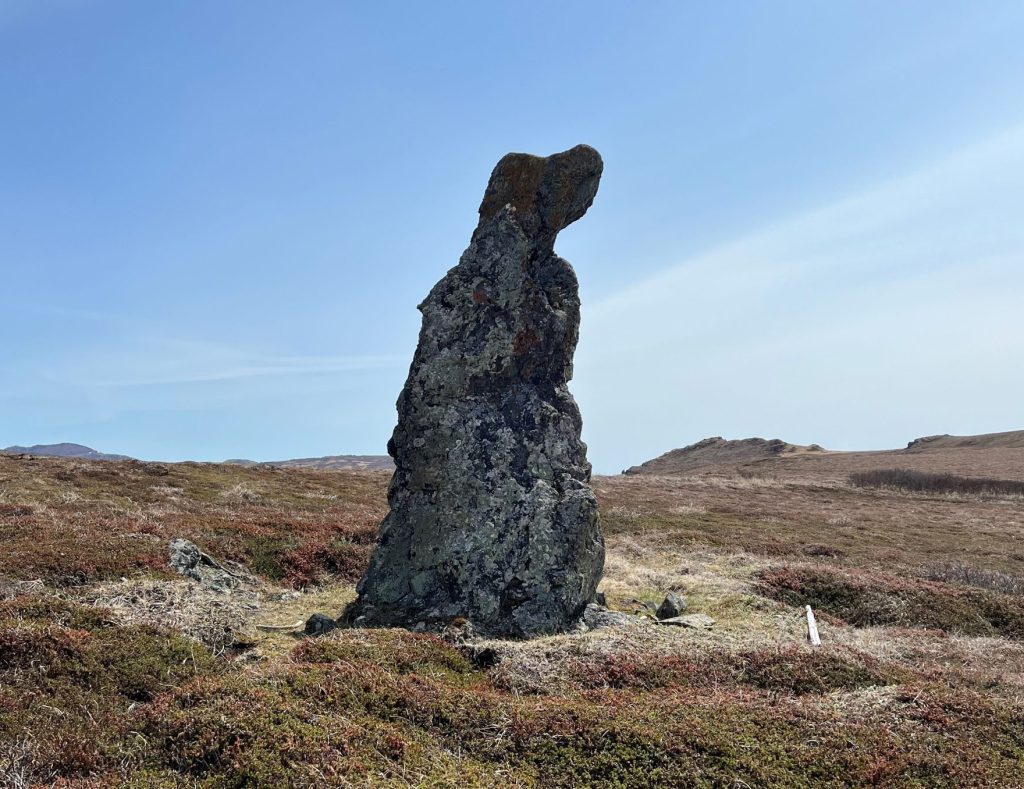

In early June, a small group organized by BBNC and the Bristol Bay Foundation (BBF) set out from Togiak on a special boating expedition: a visit to Nanvarruaq to photograph An’gaqtar, a rock formation widely known as “the Stone Lady.”
According to the late Dr. Annie Blue of Tuyuryaq, as translated by Cautekaq Eva Yanez, the story of An’gaqtar is about a woman who turned to stone while searching for her husband with her baby on her back. Bears are said to circle her three times before dying on the mountain, where they become boulders. This traditional knowledge is very important to the area. The Yup’ik people (and visitors to An’gaqtar today) still leave offerings for her, like pieces of fish. When the group arrived in June, they found—and left—several of these types of offerings. They also made their way to Tarunguaq at low tide to document An’gaqtar’s petroglyphs.
An’gaqtar is just one of nearly 1,400 places that have been identified as part of BBNC’s Place Names Project, which records Bristol Bay’s history and cultural knowledge by collecting names of places across the region. Now celebrating its 20th anniversary, the project started with a vision by the late Harvey Samuelsen, one of BBNC’s founding board members. “Land is the gift of our ancestors and the guarantee of our right to continue our subsistence lifestyle,” Samuelsen famously said. “Land is the heart of our culture. Without land, we are nothing.”

Francisca Demoski, BBNC’s Land Manager, has been part of the project almost since its inception. “Collecting, preserving, and using our traditional Native place names is so important to our cultural identity,” she says. Demoski grew up in Togiak and Yup’ik is her first language. As part of her work overseeing the Place Names Project, she works with local Elders, experts, and researchers to build the project’s ever-growing database of places names in Alutiiq, Dena’ina, Yup’ik, Russian, and English. These partners all share a common mission to safeguard and enhance community access to place names in order to preserve indispensable cultural wisdom.
Information in the database comes from a combination of submissions, interviews with Elders, partner contributions, and projects conducted by villages, schools, and tribes. Entries include the meanings and stories behind place names as well as audio recordings of their pronunciations. A place name might reflect the history of a site, identify a landmark, or indicate a good place to find berries, medicinal plants, or caribou.
Like culture, place names are “fluid and changing” depending on who you’re talking to and when, says Karen Evanoff, a BBNC shareholder and Dena’ina from Nondalton who has been collaborating with BBNC on the Place Names Project since 2016. A Cultural Anthropologist with Lake Clark National Park and Preserve, Evanoff has been working for decades to document information about locations in the Dena’ina region. She points out that, in addition to new abbreviations and shifts in pronunciation, place names can evolve like the places themselves.
Place names also offer a critical connection to Alaska Native values and spiritually. “They’re a legacy that’s vital to our history, and they help us see the worldview of our ancestors,” Evanoff says, emphasizing that her work always centers the voices and perspectives of the Dena’ina people. While putting together the 2010 book “Dena’ina Ełnena, A Celebration,” she assembled a group of local experts—“people at the forefront of the knowledge”—to select and introduce a collection of oral histories, photos, and more.
BBNC’s Place Names Project recently produced a downloadable book, “Before Bristol Bay,” which features stories about Bristol Bay locations and landmarks which you can find at bbonline.bbnc.net. Earlier this year, it also launched a free “Bristol Bay Online!” app for Apple and Android devices, making it easy for anyone to learn place names, hear their pronunciations, and take quizzes to test their knowledge. A short film is also currently in the works to mark the project’s 20th anniversary and honor the many people who have contributed to it.
“The film will educate viewers about the cultural significance of preserving traditional place names,” says Demoski. “And maybe it will inspire other Indigenous people to see that they can do something like this too.”
TAGS:
Corporate
,Regional
,Shareholder